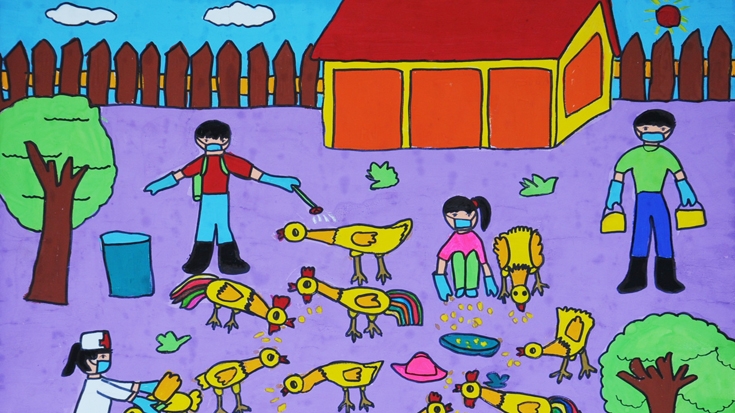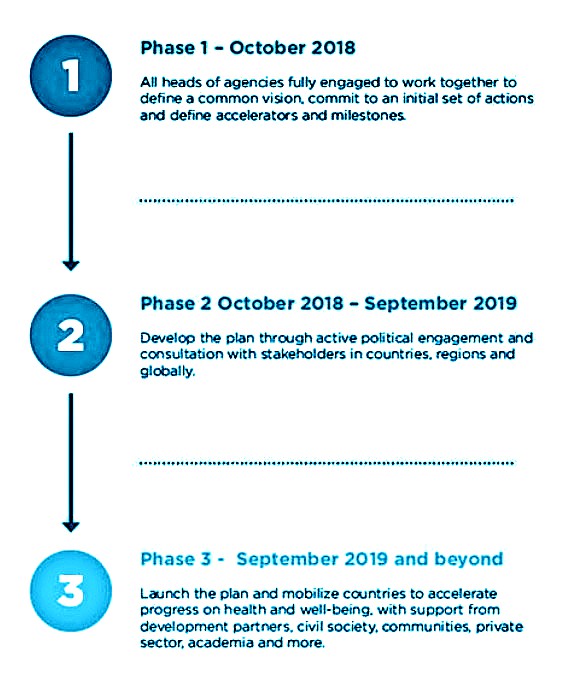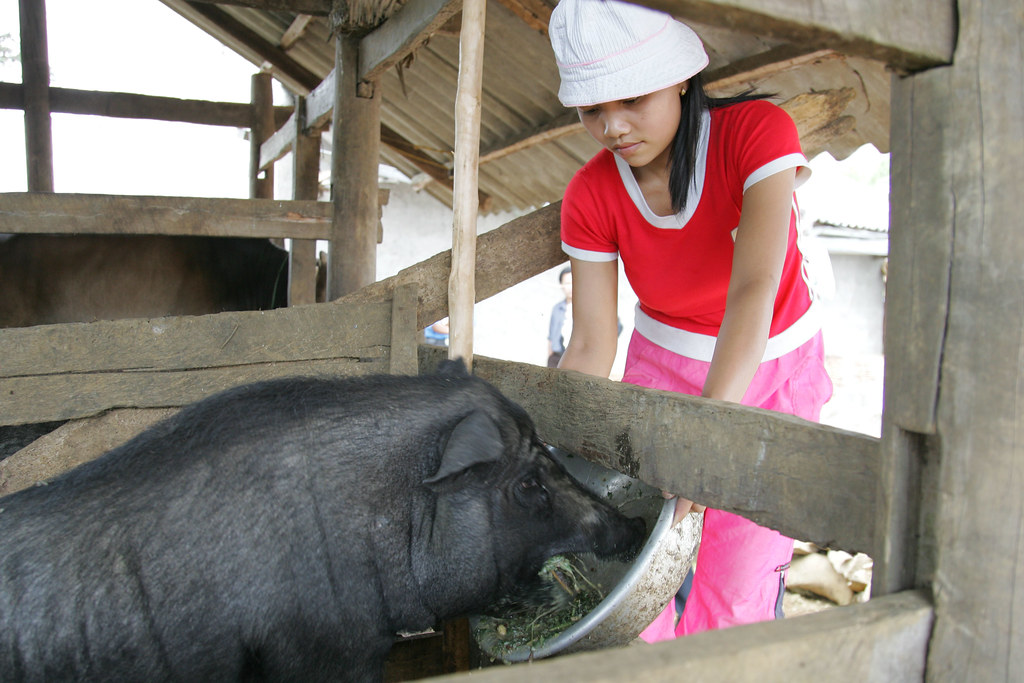In 2018 there was a small hog farm in China which was found to have the hugely contagious virus known as African Swine fever, this in the country with half the world’s pigs. Shortly after the initial outbreak the government declared the outbreak “effectively controlled”. Nine months later not only had the outbreak spread in China, but in Cambodia and Vietnam.
The impact on the global food chain is likely to last several years with China forced to import meat on an unprecedented scale, as Bloomberg reported in a recent article with an alarming title: “Pig ‘Ebola’ virus sends shock waves through Global Food Chain” (published May 3 2019).
But it’s not the first time it happens. Back in 2003, this region experienced a parallel event, this time with poultry.
Southeast Asia confronted a similar threat with Avian Flu outbreaks beginning in 2003 and with disastrous results. The crisis triggered the creation of “The Global Program for Avian Influenza Control and Human Pandemic Preparedness and Response” (GPAI) which ran from 2007-2014.
The effort engaged 62 countries through $1.3 billion and had the political support from both developed and developing countries and international organizations. The program was focused on prevention (control of the virus at the source) and to some degree on preparedness. It provided agreement on a common framework, external political and financial coordinated support, and an emphasis on coordination.
In addition to the Avian Flu, this century has seen other major economic and social disruptions caused by disease, including the Ebola outbreak in West Africa, the Middle east Respiratory Syndrome in Saudi Arabia and South Korea, and the Zika outbreak in the Americas. All of them have an animal to human link and terrible consequences.
Alas, despite the successful experience with the Avian Flu, and in particular the stellar ongoing action by the Vietnamese, once again global and institutional memory is short. Rather than build aggressively on the lessons learned, this knowledge crop lay largely fallow.

Avian Flu affected the health of both animal and humans, while African swine fever is not known to have any direct effect on people (as far as we know now). But that should not be comforting. What has emerged from growing evidence and research, and gaining traction in some countries and the global community is the notion of “One Health”. At the core of this amazing idea is the notion that there is a complex and evolving relationship between animal and human health and diseases, even as ecological and environmental factors, combined with growing trade, travel, and demography accelerate and deepen the relationship.
At the stratospheric level, the UN Sustainable Development Goals call for cross-sectoral approaches and looking at public health systems in a wider context. It has meant the creation of the SDG Global Action Plan to accelerate progress towards SDG3 through strengthening competency and coordination between international technical agencies including the World Health Organization, the World Organization for Animal Health, and the Food and Agriculture Organization.

In the main the trigger was the 2014-2015 Ebola outbreak, a seminal inflection point which generated various commissions, and studies. This included the International Working Group on Financing Preparedness which proposed ways countries and development partners could ensure adequate and sustainable financing for pandemic preparedness, and see countries achieve the needed improvements in response capacity. Most of the recommendations were for both countries to help themselves and major donors to provide supportive financing.
Which brings us to the present very near-term opportunity to address the issue: Once every three years the World Bank conducts an exercise to review its soft window, the International Development Association (IDA).
This is the moment the World Bank takes a deep look at its policy framework, shapes the future use of its funds and decides how to spend and how much. The last approved replenishment was $75.0 billion in 2016.
The upcoming pivotal round of IDA Deputies (potential donors) and Borrower Representatives (low and middle income countries) for the IDA19 Replenishment is to be held in June 2019, and will culminate with a financing package for fiscal years 2021-2023. This will be a significant chance for the new World Bank President, David Malpass, to shape one piece of the future direction and reputation for the Bank. And while there are many important and valid program claimants for these soft funds, infectious diseases is very much in need of Bank leadership, and has to count high among them.
Great discussion with @PhilipHammondUK at #ParisForum on our joint dev. priorities incl. debt transparency for #sustainable growth, prioritization of good quality projects, structural reforms support and IDA19. pic.twitter.com/WUI46kqw37
— David Malpass (@DavidMalpassWBG) May 7, 2019
The IDA19 Replenishment will offer a chance to build on earlier Bank commitment in the infectious disease space. IDA18 included money to assist 25 countries to develop infectious disease preparedness strategies and plans. It did not however commit to implementing such strategies. This is crucial for poorer countries with very limited resources, unable to respond to even basic urgent immediate priorities, to take on infectious disease prevention and preparedness.
We know that even the richest countries find it very hard to convince citizens, politicians or ministers of finance or health to invest in infectious disease prevention and preparedness as a priority, e.g. “I know it is important but don’t ask me now ”. This despite the fact that solid economic and social impact data projections show that benefits from regular modest preventive and preparedness investments are overwhelmingly far greater– less costly and longer lasting– than responding to an outbreak once it occurs. For poorhat said, the medium term objective is to have country recipients take on an increasing share with their domestic resources.
While it is true that other donors and agencies across the world have been significantly engaged, it is also true that the World Bank serves as the bell weather for regional banks, other multilateral and bilateral institutions in reflecting priorities which need attention.
The IDA18 Replenishment was an important step. The logical next step is for the Bank to set aside discrete funds to finance implementation to prevent or prepare for an outbreak, and not just to respond. Simply put, there is a strong case for the World Bank to dedicate a minimal (but necessary) percent of the next soft window for infectious disease prevention, preparedness and, yes, response by the poorer countries. The investment costs for infectious disease prevention and preparedness—and it is an investment and not a feel good social program– are modest compared to the returns.
By “paying now and not having to pay much more later”, everybody wins. We know the current African swine fever outbreak has already incurred terrible costs for many people. A similar scenario can be imagined for people. with an outbreak of some human virus–the U.S. is currently coping with a growing measles epidemic, but by no means the worst of viruses.
It is often said that every crisis is an opportunity; This is one such opportunity for World Bank shareholders and its leadership to show vision and courage.
Hopefully the African swine fever will be soon contained and result in new interest in learning to avoid or contain future livestock and human pandemics. In George Orwell’s “Animal Farm”, a pig, Napoleon, leads the Rebellion. Perversely, the African swine fever decimating Asian pigs can raise the awareness of the consequences of infectious disease outbreaks, and save us all, humans as well as livestock.









